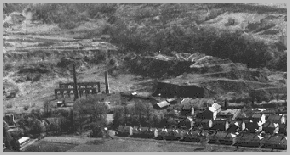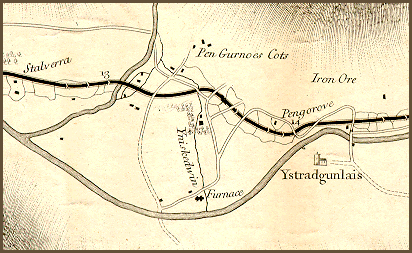
Upper Swansea Valley
The Story of Iron 1
by Len Ley
The site of
Ynyscedwyn
Iron Works

Iron-making has a long history in the area and is said to go back to the beginning of the 17th century. Theophilus Jones records that a piece of iron, stamped 1612, was found 26 years later in an old cinder bed at Ynyscedwyn. If this is so then it is likely that metal was smelted here in the reign of Elizabeth 1. The first recorded evidence shows that a Mr Brunton of London constructed a furnace at Ynyscedwyn in 1628. Later, Richard Crowley leased the works and built a furnace which later fell into ruin. By 1711 Ambrose Crowley and John Hanbury were occupiers of the site.
The Ynyscedwyn works marked on the plans of the Swansea Canal Company 1794.
Powys County Archives B/QS/
